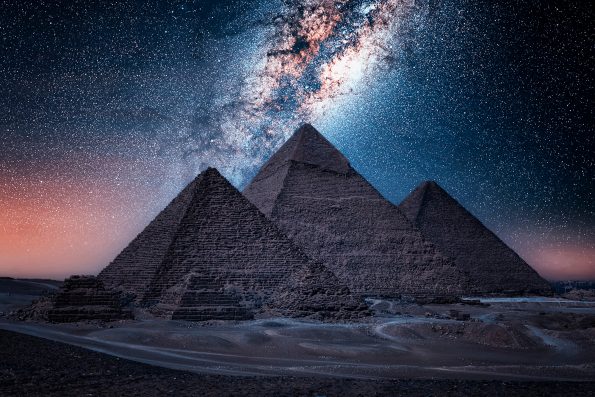The Milky Way Shares A Link With An Ancient Egyptian Goddess

Among Gen Zers, in particular, astrology has its appeal. The idea of the stars and planets aligning to determine earthly events provides a sense of comfort in a world filled with chaos.
However, belief in the power of the cosmos isn’t just a modern-day trend. The sun, moon, stars, and planets have always been an important part of the religious and cultural values of the ancient Egyptians.
In the past, it was unclear what role the Milky Way played in their beliefs, but according to a new analysis, the galaxy may have served as a path to the underworld while also acting as a guide to birds during migration.
The latest study, conducted by an astrophysicist named Dr. Or Graur from the University of Portsmouth, examined the relationship between the Milky Way and the Egyptian sky goddess Nut.
Nut is often depicted as a woman studded with stars, arching over her brother, the Earth god Geb, to protect the Earth from being flooded.
Her main responsibility is to maintain the solar cycle, swallowing the sun in the evenings and giving birth to it each morning.
It is believed that Nut is positioned with her rear in the east and her head to the west. However, the Milky Way changes its location in the sky throughout the year, so the idea of Nut representing the galaxy was questionable.
After consulting numerous ancient Egyptian texts that were found in tombs, Graur identified depictions of Nut stretching her arms out at 45 degrees to her body.
The orientation of Nut allows her to align with the various positionings of the Milky Way over the course of the year, which means that it was likely the Milky Way was associated with the sky goddess.

Stockbym – stock.adobe.com – illustrative purposes only
Graur explained that in the winter, the Milky Way highlighted Nut’s arms, while in the summer, it outlined her backbone.
To find further connections between Nut and the Milky Way, he looked into several ancient sources, such as the Pyramid Texts, Coffin Texts, and the Book of Nut. He also compared his findings with the beliefs of other cultures, showcasing similar interpretations of the Milky Way across different cultures.
For example, in one Egyptian Coffin Text, Nut is likened to a ladder that the souls of the dead could use to reach the afterlife. This description echoed the Milky Way’s role in Native American mythology.
“Many Native American peoples across North America view the Milky Way as a road along which the spirits of the dead travel to the afterlife,” Graur wrote.
“The Lakota name for the Milky Way is Wanági Thachánku, the Spirits’ Road, which the Lakota follow to heaven when they die.”
Furthermore, Finland, Estonia, and several Baltic states have designated the Milky Way as the “Birds’ Path,” a route that birds follow during migration.
Overall, Graur’s research reveals how the study of celestial bodies offers new insights into ancient beliefs and connects people from different cultures and time periods.
Sign up for Chip Chick’s newsletter and get stories like this delivered to your inbox.
More About:News





